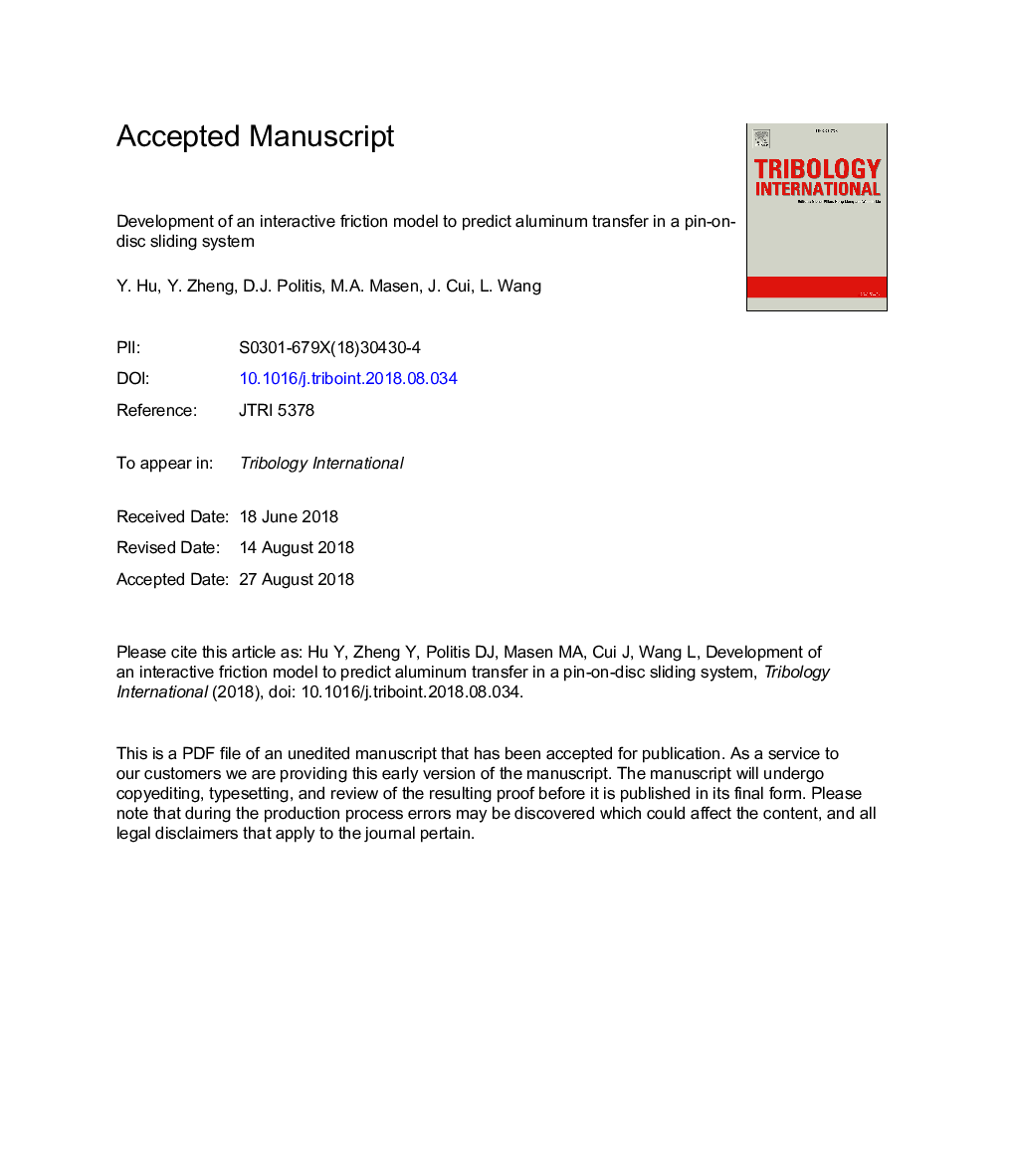| Article ID | Journal | Published Year | Pages | File Type |
|---|---|---|---|---|
| 11023778 | Tribology International | 2019 | 30 Pages |
Abstract
In aluminum forming processes, it is observed that the coefficient of friction increases and a transfer layer is formed on the tool surfaces. In the current paper, this phenomenon is studied via pin-on-disc dry sliding tests with aluminum alloy 6082 sliding against cast iron G3500. The results showed that the aluminum transfer layers generated at the sliding interface were identified as the origin of this behaviour that affects both friction and wear. To model this phenomenon, an interactive friction model was developed enabling the prediction of friction and the evolution of the transfer layer from the running in to the steady state. This mechanism based model can be used for representing friction variations and material transfer in sliding systems.
Keywords
Related Topics
Physical Sciences and Engineering
Chemical Engineering
Colloid and Surface Chemistry
Authors
Y. Hu, Y. Zheng, D.J. Politis, M.A. Masen, J. Cui, L. Wang,
